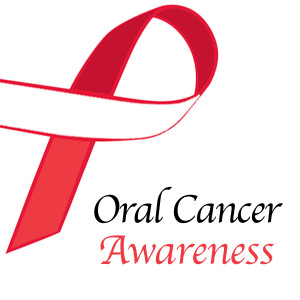Oral Cancer 2019
April is Oral Cancer Awareness Month. This month, we shine the light on cancers that invade the lips, mouth, and throat. No one wants to think about oral cancer, but knowledge is power and it just may save you or someone you love. #oralcancerawareness2019 #savealife #themoreyouknow
- More than 53,000 people in the United States will be diagnosed with oral cancer in 2019. That number is rising 3% each year. Over half a million cases will be diagnosed worldwide this year.
- Most oral cancers have around a 60% five year survival rate, depending on the stage at diagnosis. Nearly 10,000 Americans will lose their battle with oral cancer this year as it kills one person every hour in the United States alone.
- Oral cancer is more common in men than women and in people over 40, however, the fastest growing group of new oral cancer diagnoses is made up of healthy, non-smoking people under 45.
- Tobacco use (including cigarettes, chew/snuff, and vaping), alcohol use, and a diet low in fruits/vegetables all increase your oral cancer risk.
- When you combine tobacco with heavy alcohol use, your risk is significantly increased, as the two work synergistically. Those who use tobacco products and drink have a 15 times greater risk of developing oral cancer compared those who don't.
- The Human Papilloma Virus (specifically HPV16) is the most common cause of oral cancer in people under 45. HPV16 is transmitted through bodily fluids and is the same viral strain that is associated with cervical cancer.
- Like with most other cancers, oral cancer outcomes are best when it is detected and diagnosed in the earliest stages.
- Oral cancer lesions can be painless and seem unnoticeable in early stages. The most common sign/symptom is a red or white patch, sometimes similar to a canker sore, that will not heal.
Other symptoms include; a painless lump or mass which can be felt inside the mouth or neck, pain or difficulty in swallowing, speaking, or chewing, any wart-like masses, hoarseness which lasts for a long time, or numbness in the oral/facial region. - Treatment options depend on location and stage of the cancer but typically involve a multidisciplinary approach between your general dentist, an oral surgeon, as well as medical doctors. Surgery, radiation, and chemotherapy are often needed in conjunction with lifestyle changes.
- Information on oral cancer can be scary and overwhelming. The good news is that preforming regular self checks and having routine dental exams at least twice a year greatly increases the chance of finding oral cancer in the earliest stages, which typically leads to the best possible outcome.
For more in depth information on oral cancer, click here:
